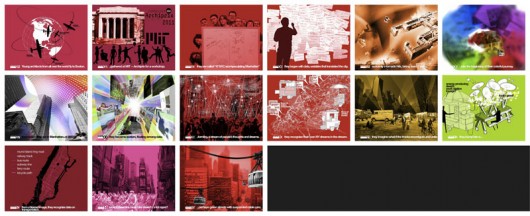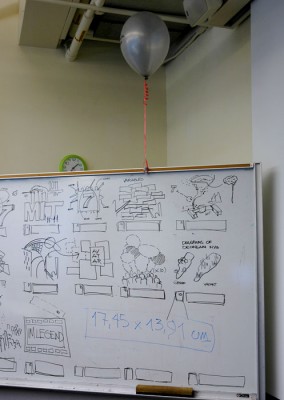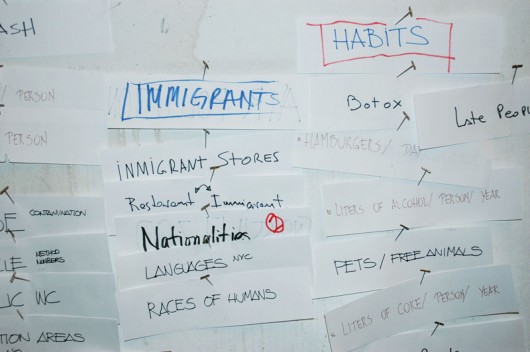INTRO:
In this workshop we won´t try to give the correct answer, we will formulate the right questions. Each perception or knowledge is the result of wonder and wonder will be the fundamental component for our discoveries and inventions. We will start from the premise that the interest of the answer depends on the shrewdness of the question.
OBJECTIVE:
Our field of investigation will be the New York City of the past of the present and of the future. We propose to analyze, represent, speculate and conjecture on Manhattan from all possible points of view. This workshop doesn’t intend to create a manifesto on NYC or a new theory of Manhattanism. It has the will to generate a profound understanding of Manhattan through the study of the infinite real variables that make the city possible. We will wonder about real data, we will argue that real data contains an enormous amount of discovery and invention; we will prove that real data is in itself a radical architecture.
CONTENT:
The term “variable” refers to an element of a formula, proposition or algorithm that can get any given value, which will be defined within a range (its own universe). In this workshop we propose to work with the term “variable” as a way to approach the possible futures of New York. The access to the information is not the challenge anymore. It is the skills to process, organize, and visualize that information what is crucial; specially, when the reality moves faster than our own ability to understand or control the change. What should be the procedure for our analysis when the object of study is never still?
We propose to take Manhattan into a virtual laboratory and disseminate it into its multiple parts; we propose to section and cut the city in every possible way and to study each of its components and the relationships among them. We will start shattering Manhattan in as many variables as possible trying to pay attention to every single piece of information, always moving away from preconceive ideas of which one might be more relevant. For us, everything will be meaningful and important: from city government, finances and employment to the number toys per children.
We will look at geographical data, crime data, registered sex offenders, cost of living, housing, religions, businesses, local news, birth places of famous people, political contributions, weather, tornadoes, earthquakes, hospitals, schools, libraries, houses, airports, radio and TV stations, zip codes, air pollution, unemployment data, water systems and their health, local poverty details, professionally written city guides, car accidents, fires, bridge conditions, cell phone towers, mortgage data, business storefront photos, blogs about NYC, restaurant inspection results, images of the city in google earth, public and private transportation: bikes, cars, metro, pedestrians, boats; patterns of happiness, energy, waste,CO2 emissions, levels of water in the river, buildings: typologies, vacancy, program; open spaces, outdoor activities, streets, traffic, parks, empty lots, theatres, bars, market trends: imports/exports; fauna and flora, urban ecosystems, historical events, internet connections, patterns of communications with other cities, symposiums and movies about NYC, art scene, education, number of cars per family, real estate prices and sales trends, recent home sales, home value estimator, population: density, race, income, ancestries, education, employment........
METHOD:
Students will be divided in groups. Each group will take Manhattan and divide it into multiple variables that will then be carefully examined, described, analyzed and organized into categories in order to extract relevant pieces of information. We will pay special attention to the representation of each of the variables through different means: video, photograph, collage…
We will generate a complex matrix of the variables of Manhattan that will be on one hand gameboard and on the other hand, design tool for the transformation of the city. Each group of students will then chose three variables and will manipulate them in a series of experiments where the future of Manhattan will not be shown as a prescription but rather as a series of multiple possible scenarios where the transformation of the existing forces will generate new inventions for a Future New York.
BIBLIOGRAPHY:
BEYOND THE MELTING POT By Nathan Glazer and Daniel P. Moynihan M.I.T. Press, 1963
THE BONFIRE OF THE VANITIES By Tom Wolfe Farrar Straus and Giroux, 1987
THE POWER BROKER By Robert A. Caro Vintage Books, 1975
THE W.P.A. GUIDE TO NEW YORK CITY Pantheon, reissued in 1982
MANCHILD IN THE PROMISED LAND By Claude Brown Macmillan, 1965
THE GREAT SCHOOL WARS: NEW YORK CITY, 1805-1973 By Diane Ravitch Basic Books, 1974
DOWN THESE MEAN STREETS By Piri Thomas Alfred A. Knopf, 1967
TIME AND AGAIN By Jack Finney Simon & Schuster, 1970
HERE IS NEW YORK By E. B. White Warner Books, 1949
ONE HUMAN MINUTE By Stanislaw Lem, 1986
_________________________________
Cristina Parreño Alonso received her Master´s and Bachelor’s degree in Architecture and Civil Engineer from the Escuela Técnica Superior de Arquitectura de Madrid (E.T.S.A.M) where she graduated with high honors in 2003. She started working as a professional on September 2001; first, working for ACM Arquitectos in Madrid; and from 2005 working for Foreign Office Architects where, she was responsible of
numerous projects from London. In 2008 she moved to open FOA Madrid and continued her role as Project Director for the building of the Forensic Institute on site. She has taught design studio at the University of Western Australia, at the State University of New York at Buffalo and currently at the MIT. She has won several architectural competitions, among others, the 1st prize for the Urban Rehabilitation of the Business complex AZCA in Madrid. Her work has been published in magazines like Quaderns, Via Arquitectura and Arquitectura COAM.
Gonzalo Pardo Díaz, received his Master´s and Bachelor’s degree in Architecture and Civil Engineer from the Escuela Técnica Superior de Arquitectura de Madrid (E.T.S.A.M) where he graduated with high honors in 2006. He has been professor of Design Studio since 2005 at the ETSAM. He has been guest lecture and has taught architecture and design workshops in many universities and institutions like the Illinois Institute of Technology (IIT), European Institute of Design (IED) the Instituto de Empresa (IE) or ATHENS courses since 2007. He has received 9 scholarships for research and teaching (Spain Ministery, ATHENS, Erasmus, UPM...) He currently belongs to the Hypermedia Research Group and is developing his PhD at the ETSAM
in the Department of Projects with a PIF‐UPM scholarship. He has received 36 national/international awards ( Ateneo, Gran Vía, AZCA, VELUX , SIKA, STOY, EMV...) His work has been publish and exhibited in numerous magazines and places.
For more information see the group's special
Flickr page





